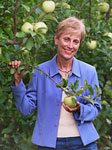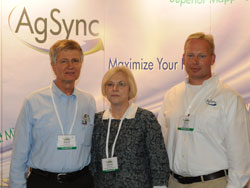 Spending time this winter analyzing your precision practices is always beneficial. To this end, check out this DTN AG Online Seminar called “Sizing Your GPS Investment/Which Tools Fit the Farm,” hosted in September by DTN and The Progressive Farmer magazine.
Spending time this winter analyzing your precision practices is always beneficial. To this end, check out this DTN AG Online Seminar called “Sizing Your GPS Investment/Which Tools Fit the Farm,” hosted in September by DTN and The Progressive Farmer magazine.
The seminar discusses numerous topics: As more tools associated with GPS technologies come available, farmers are beginning to question which ones make the most sense in their operation. For farmers just getting into the GPS world, the question is how far to get into the technology. Is yield mapping enough? Or should the farmer jump right in to high-accuracy RTK signaling and autosteer equipment systems? This webinar will include a panel of farmers who have walked through those decisions and can add insight in to what they’re doing, how well it works, and whether it adds to their efficiency and profitabilility.
To listen to a wide variety of other excellent Webinars–from taxes and seed to tillage and grain marketing, visit the DTN AG Online Seminars page.

 Sensor technology continues to amaze me. Having watched this fascinating technology since the 1980s and written about its usefulness in monitoring everything from tractor components to grain quality, I’ve become a firm believer that such sensor precision truly pays.
Sensor technology continues to amaze me. Having watched this fascinating technology since the 1980s and written about its usefulness in monitoring everything from tractor components to grain quality, I’ve become a firm believer that such sensor precision truly pays. “The G stands for setting goals,” Eckert told a meeting for women who are principal farm operators in Wisconsin recently. “If we don’t have a goal set, then any old road will do and that’s not good enough for business anymore.”
“The G stands for setting goals,” Eckert told a meeting for women who are principal farm operators in Wisconsin recently. “If we don’t have a goal set, then any old road will do and that’s not good enough for business anymore.” The buzz is all about precision…steering, strip-till, fertilizer placement.
The buzz is all about precision…steering, strip-till, fertilizer placement. I don’t have any more information on it yet but at least we’ve got the dates/location for the event.
I don’t have any more information on it yet but at least we’ve got the dates/location for the event. This week I’m attending the National Agricultural Aviation Association Convention in Las Vegas. It’s the first contact I’ve had with this group and I’ve been learning a lot. For example, I didn’t realize how big a role precision agriculture is playing in aerial application. I guess it makes sense though. If you can use gps and variable rate on the ground then why not from the air?
This week I’m attending the National Agricultural Aviation Association Convention in Las Vegas. It’s the first contact I’ve had with this group and I’ve been learning a lot. For example, I didn’t realize how big a role precision agriculture is playing in aerial application. I guess it makes sense though. If you can use gps and variable rate on the ground then why not from the air? .
. Like farmers, more retailers are using their steering wheels less this past year–without going in the ditch!
Like farmers, more retailers are using their steering wheels less this past year–without going in the ditch! With fertilizer costs and 2009 cropping plans being top-of-mind right now, variable-rate (VR) application is an option you should explore to improve efficiency.
With fertilizer costs and 2009 cropping plans being top-of-mind right now, variable-rate (VR) application is an option you should explore to improve efficiency. The
The